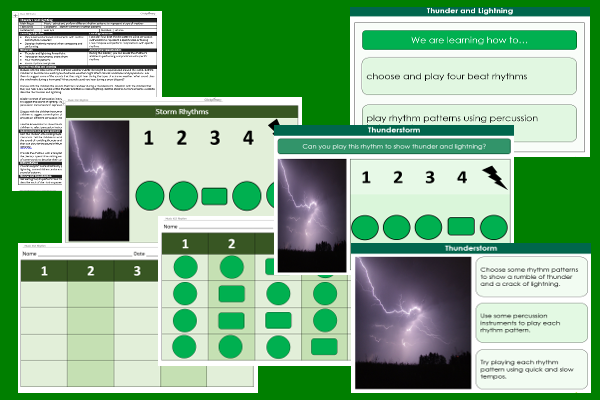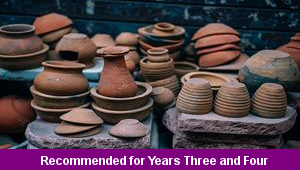Home > Key Stage Two > Music > Rain Rhythms
Lesson Four – Thunder and Lightning

This music teaching pack for Key Stage Two gets the children to select and perform a range of different rhythm patterns that can represent a type of weather to show what might happen during a storm.
The class can try composing their own rhythm patterns with beats and rests to perform to the class to illustrate the power and events connected to a thunderstorm.
Download this teaching pack including a lesson plan, classroom activities and an interactive presentation to select and perform a range of different rhythm patterns that can represent a type of weather to show what might happen during a storm
Activities in this teaching pack include display posters to identify and perform rhythm patterns to represent a type of weather, a template to select and record a range of different rhythm patterns to represent a type of weather for core and extension ability levels and a worksheet to play four beat rhythm patterns to illustrate a storm for support ability levels.
The interactive presentation gets the children to explore how to perform a range of different rhythm patterns to represent a type of weather.
This lesson is part of a music scheme of work to get the children to practise composing and performing four beat rhythm patterns to reflect ideas and expressions illustrating the weather. There are teaching activities for shared learning, differentiated worksheets to support independent learning and interactive presentations to introduce concepts and key skills.
-

Classic Animal Stories
Investigate the structure and content of classic works of fiction by significant authors with animals as the main characters
-

Cities, Towns and Villages
Research and present the history of a range of different buildings and people that are part of the local community using a school exhibition
-

Recycling
Research and present some of the benefits and disadvantages that can be produced when recycling different materials at home and in school
-

Viking Pots
Develop and refine a range of different art and design techniques when working with clay to make pots that represent Viking culture and traditions
